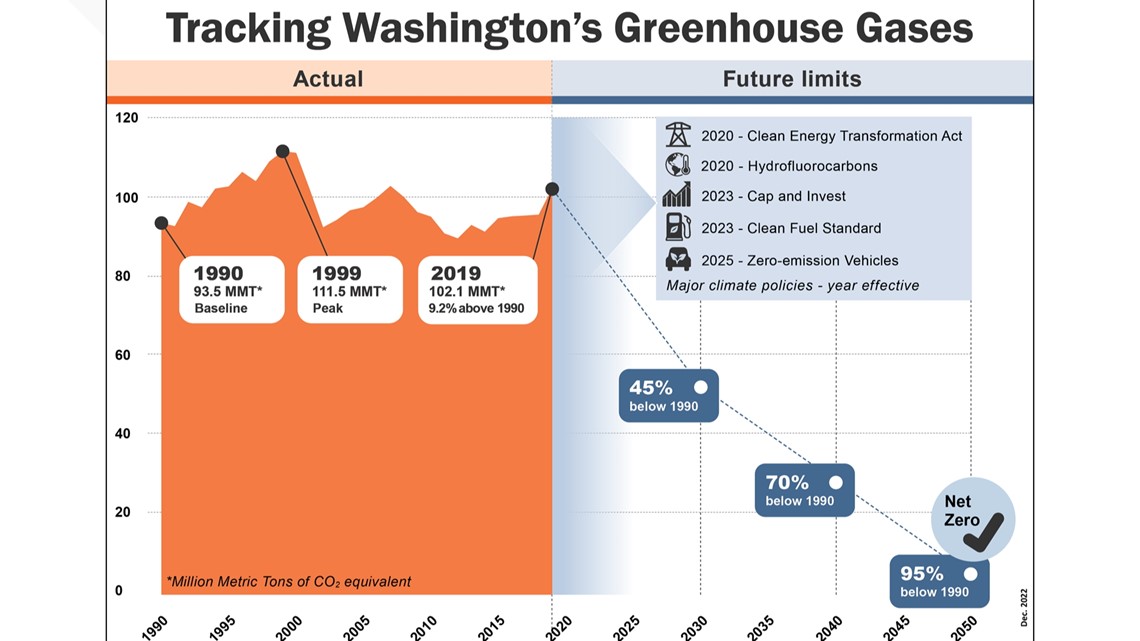SEATTLE — In 2019, Washington’s greenhouse gas emissions reached their highest point in 12 years, according to a state Department of Ecology report released Wednesday.
Emissions reached 101.2 million metric tons of carbon dioxide equivalent in 2019, which was a 6.9% increase over 2018. The spike was due to increased electricity demand and a poor hydropower year, which pushed utility companies to use fossil fuels to make up the difference, Ecology said.
“Our greenhouse gas emission from electricity generation were significantly higher than they’ve been in recent years," said Andrew Wineke with the Department of Ecoloy. "That’s because we had a dry year there wasn’t that much water behind our state’s dams and so we had to rely on coal and natural gas to make up the difference in that electrical generation.”
Joel Creswell, climate policy section manager with Ecology, said the report was “a stark reminder” that Washington must cut emissions.
Greenhouse gases, which include carbon dioxide, methane and nitrous oxide, trap heat in the atmosphere and are one of the primary contributors to climate change.
Ecology uses state and federal data to put together an emissions inventory every two years. The agency said nationwide data typically comes with a “significant” lag time in reporting, which is why 2019 is the most recent full reporting year.
Preliminary 2020 data suggests emissions went down that year due to improved hydropower conditions and a decline in electricity demand due to the COVID-19 pandemic.
“We’ve made great progress since this data came out and we’re really going to see that in the coming years as future numbers come in,” Wineke said.
Emissions in 2019 were below the 1999 peak of 111.5 million metric tons. Washington’s population has continued to increase since then. Ecology said that meant per capita emissions have decreased overall. Although, 2019 emissions are still 9.2% above the 1990 baseline of 93.5 metric tons.
Since 2019, Washington has passed several new laws aiming to curb emissions. Under current state law, Washington must cut emissions to 45% of 1990 levels by 2030, 70% by 2040 and zero by 2050.


In August, Washington announced it would ban the sale of gas-powered vehicles starting in 2035, which Gov. Jay Inslee called “a critical milestone” in the fight against climate change.
On Jan. 1, Washington’s cap-and-invest program and clean fuel standard will go into effect. The cap-and-invest program requires major sources of carbon pollution to get allowances equal to their emissions, and the number of allowances will be reduced over time. The clean fuel standard requires fuel suppliers to reduce the carbon intensity of their products 20% by 2034.
“We have strong policies in place to cut carbon pollution, and we’re confident Washington is on the right path,” Creswell said. “But it will still take time for the effects of those laws to show up in future inventory releases.”

